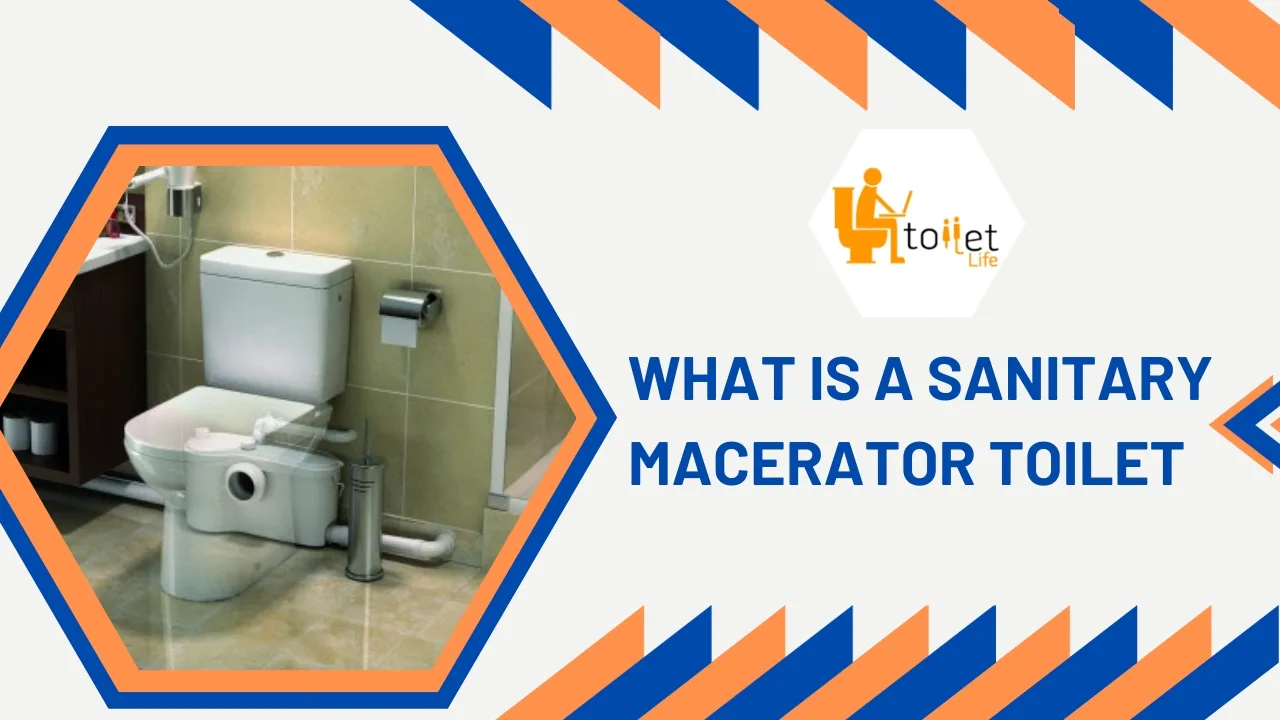A sanitary macerator is a device that grinds solid waste into small particles and discharges them into the drainage system. It is a plumbing tool that provides an easy and efficient way to handle waste from toilets, sinks, and other fixtures in areas where conventional plumbing systems are not feasible.
Sanitary macerators are commonly used in boats, rvs, and homes where the installation of traditional plumbing is difficult or impossible. These devices are designed to grind and breakdown solid waste, making it easier to discharge through the drainage system.
They work by using a powerful motor that rotates blades that shred and grind the waste into small particles that are then flushed away. Sanitary macerators are also equipped with a pump that helps the wastewater to flow easily through the drainage system. In this article, we will discuss sanitary macerators in more detail, including how they work and their benefits.
What Are Sanitary Macerator Systems?
Sanitary macerator systems are essential components in modern plumbing systems. These systems function by breaking down solid waste into smaller particles that can be easily transported through the plumbing system.
There are various types of macerator systems available in the market, including grinder pumps, cutting macerators, and shredder pumps.
These systems are designed to be installed within or outside of the building, depending on the specific needs of the property. The macerator system works by utilizing high levels of pressure to break down the waste and then pumps it out to the sewer line.
If you’re upgrading or updating your plumbing system, investing in a sanitary macerator system could be a smart choice for maintaining the cleanliness and functionality of your system.
Also Read: Can You Put Toilet Paper in a Macerator: A Guide to Toilet Paper Use!
What does a macerator toilet Work do?
A macerator toilet is a type of toilet that uses a macerator pump to break down waste and toilet paper into a fine slurry before pumping it through plumbing pipes. The process involves grinding and liquefying solid waste to facilitate easier transportation through the plumbing system. Here’s how a macerator toilet works:
1. Waste and Water Entry:
When you flush the macerator toilet, waste and water enter the toilet bowl, similar to a conventional toilet.
2. Grinding Mechanism:
Inside the macerator toilet, there’s a grinding mechanism, typically a high-powered electric motor with rotating blades. These blades shred the waste and toilet paper into small particles, creating a slurry.
3. Macerator Pump:
The slurry is then pumped out of the macerator toilet by the macerator pump. The pump is responsible for breaking down the waste into a more liquid-like consistency, making it easier to move through the plumbing.
4. Piping System:
The slurry is pushed through a specialized, smaller-diameter pipe instead of the regular large-diameter sewer pipe used in traditional plumbing. This smaller pipe is easier to install and allows for more flexible plumbing arrangements, making it suitable for locations where traditional plumbing might be challenging.
5. Connection to the Sewer or Septic System:
The slurry is transported through this smaller pipe and eventually connects to the main sewer line or a septic tank.
6. Disposal:
The slurry then joins the regular wastewater system, where it undergoes treatment or goes to the septic tank for further processing.
The macerator toilet's grinding and pumping action enables the waste to be efficiently transported through narrower pipes, overcoming potential plumbing obstacles. This technology is particularly useful in locations where conventional plumbing is impractical or too costly to install. It provides a solution for toilets installed in basements, under stairwells, or other locations with limited access to the main sewer line.
Also Read: What Can Go Wrong With A Macerator Toilet: Macerator Potential Issues!
What Is the Difference Between a Macerator Toilet and a Regular Toilet:
Here’s a simple table about “The key differences between a macerator toilet and a regular (conventional) toilet:
| Aspect | Macerator Toilet | Regular (Conventional) Toilet |
|---|---|---|
| Waste Processing | Uses a macerator pump to grind waste into a slurry for easier disposal through smaller-diameter pipes. | Uses gravity and water flow to flush waste directly into the sewer or septic system through larger-diameter pipes. |
| Plumbing Flexibility | Allows for more flexible plumbing configurations due to the ability to pump waste over longer distances and uphill. | Relies on traditional plumbing configurations, limiting installation options and requiring proximity to the sewer or septic system. |
| Pipe Diameter | Uses smaller-diameter pipes (typically 1-2 inches) for waste transport due to the macerated slurry consistency. | Utilizes standard larger-diameter pipes (usually 3-4 inches) for waste transport. |
| Installation Locations | Suitable for locations with challenging plumbing setups, such as basements or areas far from the main sewer line. | Typically installed in locations with direct access to the main sewer line, restricting installation options. |
| Ease of Installation and Retrofitting | Easier to install and retrofit, especially in existing buildings, as it requires smaller pipes and may not need major modifications to plumbing. | Requires traditional plumbing setups and may involve more extensive modifications during installation or retrofitting. |
| Noise Level | Tends to be louder during the maceration process due to the motorized grinding mechanism. | Generally quieter during flushing, with noise limited to the water flow and flushing action. |
| Cost and Maintenance | Usually more expensive due to the added technology of the macerator pump and specialized components. Maintenance may also involve the pump and motor components. | Typically less expensive to purchase and install. Maintenance usually involves standard plumbing components and is generally straightforward. |
| Waste Disposal Efficiency | Efficient in breaking down waste into a slurry, enabling smoother waste disposal through the plumbing system. | Direct disposal of waste with the use of gravity, relying on the natural flow into the sewer or septic system. |
Understanding these differences helps individuals choose the appropriate type of toilet based on their specific needs and the plumbing requirements of their location.
Also Read: Maintaining Cleanliness: A Guide to Cleaning a Macerating Toilet?
Benefits of Sanitary Macerator Systems?
Sanitary macerator systems are an innovative solution to traditional plumbing installations. They provide numerous benefits, beginning with reduced costs and time.
The compact design of a macerator system allows it to fit into small homes or commercial buildings. Additionally, macerator systems have environmental benefits, such as water conservation.
These systems also promote health and hygiene, as waste is efficiently and safely disposed of. Overall, the use of a sanitary macerator system provides a cost-effective and efficient plumbing solution, with numerous advantages for both individuals and the environment.p
FAQ: Macerator Toilets and Macerator Pumps:
Q1. What is a Macerator Toilet?
A macerator toilet is a type of toilet that utilizes a macerator pump to break down waste and toilet paper into a fine slurry before pumping it through plumbing pipes. This technology allows for more flexible plumbing arrangements.
Q2. How Does a Macerator Toilet Work?
A macerator toilet employs a high-powered electric motor with rotating blades to grind waste and toilet paper into small particles, creating a slurry. This slurry is then pumpe through specialized, smaller-diameter pipes for easier transportation through the plumbing system.
Q3. What is a Macerator Pump?
A macerator pump is an electrically powere device that grinds waste into a slurry, allowing for efficient transportation through smaller-diameter plumbing pipes. It is a key component of a macerator toilet system.
Q4. Macerating Toilet Pros and Cons:
- Pros:
- Flexibility in plumbing configurations.
- Suitable for challenging installation locations.
- Enables waste disposal over longer distances and uphill.
- Cons:
- Higher initial cost due to added technology.
- May produce more noise during operation.
- Requires specialized maintenance and repairs.
Q5. Macerator Toilet Problems:
Common problems with macerator toilets may include clogs or jams in the macerator pump, increased noise during operation, and potential issues with the pump motor or blades. Regular maintenance and proper usage can help mitigate these problems.
Q6. Macerator Toilet Building Regulations:
Building regulations related to macerator toilets may vary by location. It’s important to consult local building codes and regulations to ensure compliance with installation and usage requirements for macerator toilets.
Q7. What is a Macerator Pump on a Boat?
A macerator pump on a boat is a device that grinds waste from marine toilets into a slurry for efficient discharge into the boat’s holding tank or directly overboard. It facilitates proper waste management on marine vessels.
Q8. Macerator Toilet Paper:
Macerator toilet paper is a type of toilet paper designe to break down easily in water, aiding the maceration process in macerator toilets. It helps prevent clogs and ensures smooth operation of the macerator toilet system.
Closing Reminder:
A sanitary macerator toilet is an innovative bathroom fixture that uses a macerator pump to grind waste and toilet paper into a slurry, allowing smooth transport through smaller plumbing pipes.
This technology offers flexibility in plumbing configurations, making it ideal for challenging installation locations such as basements or spaces distant from the main sewer line. While it may require a slightly higher initial investment and specialized maintenance,
The benefits in terms of convenience, efficient waste disposal, and adaptable plumbing setups make the sanitary macerator toilet a modern solution for improved bathroom functionality and cleanliness.










